Posted: February 18th, 2013 | No Comments »
CHINESE DRAGON INVADES WALTON HIGH STREET – Even many avid China Watchers of the highest order may have missed this breaking story in the widely read Clacton and Frinton Gazette (circulation 14,320 apparently) that a Chinese dragon had invaded Walton High Street (click here and you can see a lovely picture of the dragon that invaded Walton and the sinister manipulators of this devious scheme). Actually, despite the worrisome headline, it was all for educational purposes – the wonderfully named Headmistress of Walton Primary School, Susie Bliss, wants her young charges to learn more about China and so they started with dragons and new year and all that…
Still, reminded me that the UK has been invaded by China before – round about 1916 if PG Wodehouse is to be believed. Wodehouse wrote Swoop!, or How Clarence Saved England in 1909 as a short satire on the then popular genre of invasion literature. It tells the amusing story of a host of foreign armies all invading England in a rather haphazard and uncoordinated way yet being quite successful. The British don’t really mind too much until Clarence rouses them to arms. Among the invading powers is an army from China who for some reason decide to land in Wales. However, as with many people who’ve rashly decided to holiday in Wales over the years, they end up walking around in circles getting muddier and wetter and eventually decide the whole venture is a waste of time and go home.
It is all actually quite amusing, and free on Gutenberg to download. PG Wodehouse seems to remain surprisingly popular – I was recently in India and bookshops there devote entire shelf units to Wodehouse collections while I note that the BBC has recently done Blandings, based on Wodehouse’s Blandings Castle stories.
Anyway Walton, Wales, Wodehouse…i have always maintained that this blog does rather revel in the obscure…
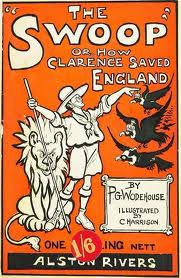
Posted: February 17th, 2013 | 1 Comment »
As promised yesterday some images of the Hudec Memorial Hall on Panyu Road (formerly Columbia Road) per-restoration in 2010:
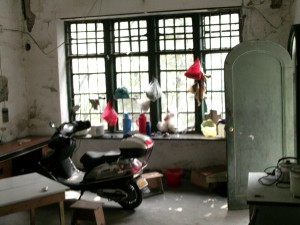
Handy place to keep a scooter…
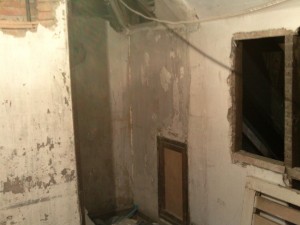
some rather wrecked plaster work…
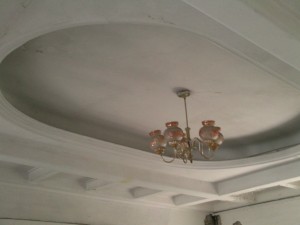
But intact cornicing which has hopefully been kept….
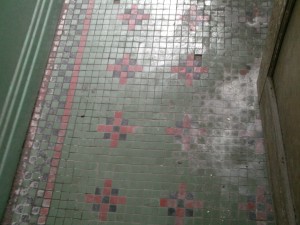
And very good floor tiles which also hopefully have been kept…(note to restorers if it’s not too late – by your love of detail shall we know you)
Posted: February 16th, 2013 | 2 Comments »
Later this year the Shanghai architect Laszlo Hudec’s old house on Panyu Road (formerly Columbia Road) will open to the public as the Hudec Memorial Hall. This is great news and there’s more details here. So I don’t know what’s in the house now or what will be exhibited. Hudec was obviously important – over 100, mostly excellent, buildings in Shanghai including the Park Hotel and a few that have been torn down too (35 are gone now out of the total 100). Apparently the Hungarians are responsible for this restoration – good on them. Anyway, as I can’t see inside yet I thought I’d repost some photos taken in 2010 when (with Duncan Hewitt and Bill Savadove) I spent a brisk spring morning crawling over the building which at the time was in a desperate state of repair and looked like it might go. A migrant worker family were (sort of) looking after it but it was a bit knackered. Amazingly it’s been saved though the once lovely gardens (see first picture below) have gone to some 1950s blocks and a particularly ugly concrete block of a hotel slap bang in front of it. So, anyway, what the house and gardens once looked like and then a bunch of photos from 2010 and back with more in June hopefully when we get a look inside.
I’ll post the outside today and the old inside tomorrow…there’ll also be more photos on my tumblr overspill site at http://chinarhyming.tumblr.com/
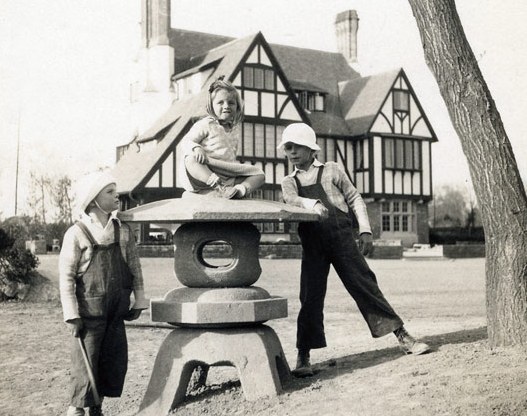





Posted: February 15th, 2013 | No Comments »
Lindqvist has long been one of the more interesting of the crop of modern travel writers covering the East and this book, The Myth of Wu Tao Tzu, is no exception so I thought it worth mentioning here as it’s recently been reprinted by Granta. It’s a fascinating meditation on the meaning of art and its link/separateness from the wider world. I have shared Lindqvist’s experience of feeling almost able to step into a piece of Tang Dynasty art. A couple of years ago I visited the National Palace Museum Digital exhibition at Taipei’s Huashan 1914 Creative Park where several works, similar to Wu Tao Tzu, were reproduced on plasma screens with touch screen technology allowing you to zoom in and out – the effect was to amplify the experience Lindqvist experienced of being able to step into a world through a work of art (I blogged about that here). However, of course, ultimately reality intrudes….

‘During the Tang dynasty, the Chinese artist Wu Tao-tzu was one day standing looking at a mural he had just completed. Suddenly, he clapped his hands and the temple gate opened. He went into his work and the gates closed behind him.’ Thus begins Sven Lindqvist’s profound meditation on art and its relationship with life, first published in 1967, and a classic in his home country – it has never been out of print. As a young man, Sven Lindqvist was fascinated by the myth of Wu Tao-tzu, and by the possibility of entering a work of art and making it a way of life. He was drawn to artists and writers who shared this vision, especially Hermann Hesse, in his novel Glass Bead Game. Partly inspired by Hesse’s work, Lindqvist lived in China for two years, learning classical calligraphy from a master teacher. There he was drawn deeper into the idea of a life of artistic perfectionism and retreat from the world. But when he left China for India and then Afghanistan, and saw the grotesque effects of poverty and extreme inequality, Lindqvist suffered a crisis of confidence and started to question his ideas about complete immersion in art at the expense of a proper engagement with life. The Myth of Wu Tao-tzu takes us on a fascinating journey through a young man’s moral awakening and his grappling with profound questions of aesthetics. It contains the bracing moral anger, and poetic, intensely atmospheric travel writing Lindqvist’s readers have come to love.
Posted: February 14th, 2013 | No Comments »
Sorry, but I found out about this a little too late to publicise, but you can follow it up and hopefully at some point it will come to Shanghai in some form. Jamie Carstairs from the Visualising China project at Bristol University created an installation of photos old and new, just exhibited in Bristol over Chinese New Year, around the Revd. CE Darwent’s 1904 Shanghai Handbook for Travellers and Residents.
More details here and here with photographic examples of Darwent and Carstairs’s work
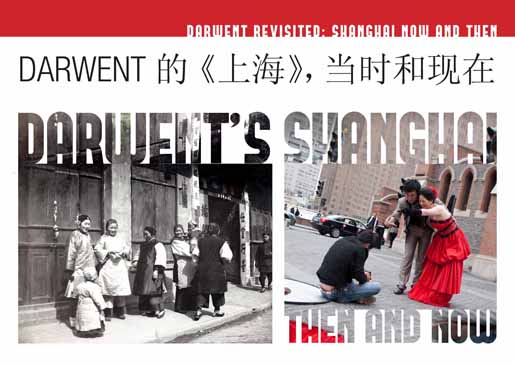
Posted: February 13th, 2013 | No Comments »
These days Chinese politicians don’t get much involved in celebrity endorsements, even when they retire (they don’t really need the money it seems!!). But in times past they have – or at least their image was positive enough to be seen as good for endorsing a product other than authoritarian government. Li Hung Chang (or Hongzhang if you prefer) was by far the most internationally recognisable statesmen of late Qing China and the western media was fascinated by the so-called Self Strengthening Movement, which he championed. Li was also a bit of a traveller – he went to Russia, England and America among other countries in the late 1890s. His American visit excited enough attention that the New York Sunday Journal decided to use his image for a bit of publicity. Whether he was paid for his endorsement or not I don’t know – I suspect not, like Dickens he probably just got ripped off by the Americans. Oh how the tables have turned in turned in terms of IP theft of celebrity images!
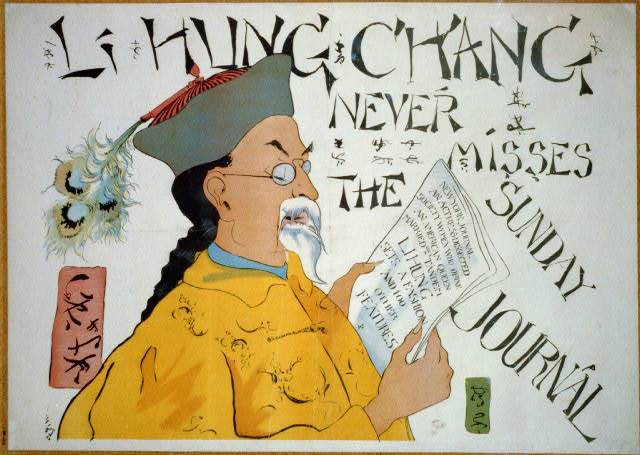
Posted: February 12th, 2013 | 2 Comments »
Apologies, a self promoting post I’m afraid. However, Midnight in Peking has been nominated for an Mystery Writers of America Edgar Allan Poe Award that “honor the best in mystery fiction, non-fiction and television, published or produced in 2012.” Apparently it’s the 204th anniversary of the birth of Poe this year – I have no idea if 204 is auspicious or not.
I’ve been nominated in the rather oddly titled ‘Best Fact Crime’ category…and here’s the competition:
BEST FACT CRIME 2012
Midnight in Peking: How the Murder of a Young Englishwoman Haunted the Last Days of Old China by Paul French (Penguin Group USA – Penguin Books)
Devil in the Grove: Thurgood Marshall, the Groveland Boys, and the Dawn of a New America by Gilbert King (HarperCollins Publishers – Harper)
More Forensics and Fiction: Crime Writers’ Morbidly Curious Questions Expertly Answered by D.P. Lyle, MD (Medallion Press)
Double Cross: The True Story of the D-Day Spies by Ben Macintyre (Crown Publishers)
The People Who Eat Darkness: The True Story of a Young Woman Who Vanished from the Streets of Tokyo – and the Evil that Swallowed Her Up by Richard Lloyd Parry (Farrar Straus & Giroux Originals)
They’re announced on May 2nd so we’ll see if a trophy is forthcoming – if not prepare for one of those “it was great simply to be nominated” blog posts
You can see all the categories and nominees here
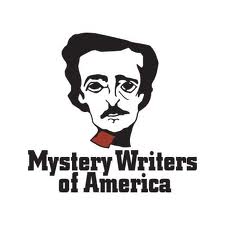
Posted: February 12th, 2013 | No Comments »
Jukong Road and Jukong Alley (often spelt Ju Kong) were once legendary names in Shanghai. Consider this enticing description from 1936’s Shanghai: High Lights, Low Lights and Tael Lights, the wonderfully irreverent guide book to the city’s seemier side by Maurine Karns and Pat Patterson:
Just the other side of the Settlement gate, and in the Chinese late-closing area, is Jukong Alley, scene of the Venus Cabaret, already described. Here are probably the greatest collection of honky-tonk cafes ever assembled on one street. Most of them are Russian, some are Japanese, all of them something extra special in what the Well Dressed Man is avoiding this season. That is, outside of the Venus, and an especially choice resort, called the Red Rose, quite popular with the Russians.
Just beyond the Settlement boundaries (and with dubious police control), in the so-called Northern External Roads was Jukong Road (now Zhongxing Road). It has seen a lot of redevelopment since 1936. First the Japanese bombed the hell out of the area around the Shanghai Railway Station and destroyed many of the buildings. Since then of course that area of Hongkew up past the old Paoshan Road (Baoshan Road) and the new look railway station has been further redeveloped with blocks of flats and some rather ugly cement block buuldings. The street, now widened and shortened is rather nondescript with drab 1950s workers blocks, 1990s wanna-be middle class compounds and non-architecture architecture of the grey block variety.
However, it was once vibrant. As well as the nightclubs drawn to the illegality of the area there were some legitimate and well known businesses – I’ve blogged before about The Teddy Bakery for instance. There was also quite a lot of traditional low level lilong residences on the street and some did survive both the war and the initial waves of Shanghai’s “redevelopment”. However, a stroll along the street today (which is now truncated at the eastern end (towards Sichuan Road North, which has still has some nicely restored properties in the vicinity, and no longer crossed by the railway line as it used to be – though the site of the old Tiantong Railway Station is commemorated with a plaque) reveals that the few remaining older residences are mostly now slated for demolition. Once these go Jukong Road will be completely obliterated effectively except for a few, still quite charming lanes (as shown in the third picture below).
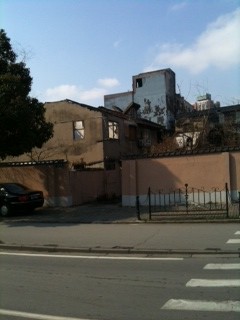
 a block facing Zhongxing Road coming down…
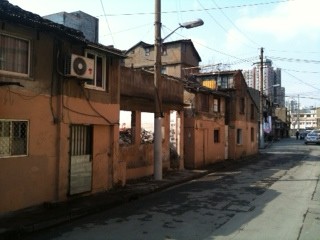
A larger lane that is also in the process of demolition…
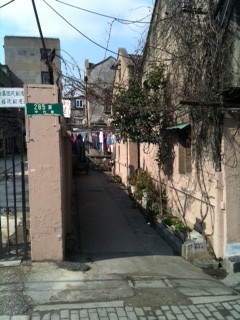
One of just a handful of the smaller lanes left that appear safe for now.

















